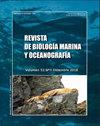Procesos metodológicos para la colocación de transmisores satelitales en tortugas marinas de caparazón duro en playas de anidación
IF 0.5
4区 生物学
Q4 MARINE & FRESHWATER BIOLOGY
引用次数: 4
Abstract
Sea turtles are migratory species that occupy several marine and coastal habitats along their different life stages. The study of the spatial and temporal distribution of these vertebrates has been revolutionized with technological advances such as satellite telemetry, which in the last two decades has substantially increased its implementation. This technology attends the need of knowing and locating their critical habitats (such as inter-nesting, migrating, feeding and mating) as well as know their migratory movements for the understanding of their biology and protection through the deployment of satellite transmitters on sea turtle individuals. Because the cost of a satellite transmitter is high, its effective deployment on a sea turtle in a quickly, safely, and firmly way is of vital interest to the researcher to ensure that the transmitter persists for an extended time maximizing the information contribution and benefit the research. In this context, the objective of this contribution is to describe and document experiences applying standardized and verified methodological steps for deploying satellite transmitters on hard shell marine turtles. This contribution represents a documented and step-by-step viable description on the path to have clear and versatile basis as reference for the satellite transmitter deployments.在筑巢海滩的硬壳海龟中放置卫星发射器的方法过程
海龟是迁徙物种,在其不同的生命阶段占据了几个海洋和沿海栖息地。随着卫星遥测等技术的进步,对这些脊椎动物的空间和时间分布的研究发生了革命性的变化,在过去二十年中,卫星遥测技术的实施大大增加。这项技术满足了了解和定位海龟关键栖息地(如相互筑巢、迁徙、觅食和交配)的需要,并通过在海龟个体上部署卫星发射机来了解它们的生物学和保护,了解它们的迁徙运动。由于卫星发射机的成本很高,因此研究人员对快速、安全、牢固地将其有效部署在海龟身上至关重要,以确保发射机能够长时间使用,最大限度地提高信息贡献并使研究受益。在这方面,这一贡献的目的是描述和记录在硬壳海龟身上部署卫星发射机时采用标准化和经过验证的方法步骤的经验。这一贡献代表了一个有文件记录的、逐步可行的路径描述,以便为卫星发射机部署提供清晰和通用的参考。
本文章由计算机程序翻译,如有差异,请以英文原文为准。
求助全文
约1分钟内获得全文
求助全文
来源期刊
CiteScore
0.70
自引率
0.00%
发文量
41
审稿时长
12 months
期刊介绍:
Publicar desde una perspectiva científica, artículos originales, decididos por un proceso de revisión por pares, invitando a expertos de reconocido prestigio en el área. Los trabajos publicados se caracterizarán por su solidez teórica-metodológica, actualidad y relevancia para las ciencias marinas.
Se reciben trabajos inéditos derivados de la investigación científica realizada en ambientes marinos y estuarios, en formato de Revisión, Artículos, Notas Científicas, y Obituarios en las siguientes disciplinas::
Biología-Ecología marina
Oceanografía física, química y biológica
Contaminación marina
Geología marina
Sistemática, Faunística y Biogeografía Marina
Manejo Costero
Acuicultura marina
Pesquería marina.

 求助内容:
求助内容: 应助结果提醒方式:
应助结果提醒方式:


